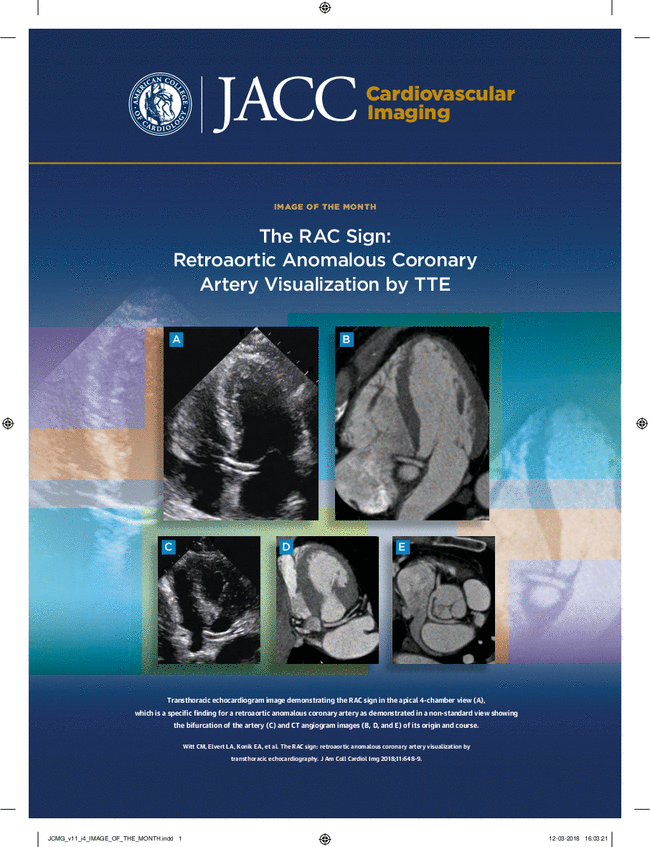Myocardial Characteristics, Cardiac Structure, and Cardiac Function in Systemic Light-Chain Amyloidosis
IF 12.8
1区 医学
Q1 CARDIAC & CARDIOVASCULAR SYSTEMS
引用次数: 0
Abstract
Background
In systemic light-chain (AL) amyloidosis, cardiac involvement portends poor outcomes.
Objectives
The authors’ objectives were to detect early myocardial alterations, to analyze longitudinal changes with therapy, and to predict major adverse cardiac events (MACE) in participants with AL amyloidosis using cardiac magnetic resonance imaging (MRI).
Methods
Recently diagnosed participants were prospectively enrolled. AL amyloidosis with and without cardiomyopathy (AL-CMP, AL-non-CMP) were defined based on abnormal cardiac biomarkers and wall thickness. MRI was performed at baseline, 6 months in all participants, and 12 months in participants with AL-CMP. MACE were defined as all-cause death, heart failure hospitalization, and cardiac transplantation. Mayo stage was based on troponin T, N-terminal pro–B-type natriuretic peptide, and difference in free light chains.
Results
This study included 80 participants (median age 62 years, 58% men). Extracellular volume (ECV) was abnormal (>32%) in all participants with AL-CMP and in 47% of those with AL-non-CMP. ECV tended to increase at 6 months (median +2%; AL-CMP P = 0.120; AL-non-CMP P = 0.018) and returned to baseline values at 12 months in participants with AL-CMP. Global longitudinal strain (GLS) improved at 6 months (median −0.6%; P = 0.048) and 12 months (median −1.2%; P < 0.001) in participants with AL-CMP. ECV and GLS were strongly associated with MACE (P < 0.001) and improved the prognostic value when added to Mayo stage (P ≤ 0.002). No participant with ECV ≤32% had MACE, while 74% of those with ECV >48% had MACE.
Conclusions
In patients with systemic AL amyloidosis, ECV detects subclinical myocardial alterations. With therapy, ECV tends to increase at 6 months and returns to values unchanged from baseline at 12 months, whereas GLS improves at 6 and 12 months in participants with AL-CMP. ECV and GLS offer additional prognostic performance over Mayo stage. (Molecular Imaging of Primary Amyloid Cardiomyopathy [MICA]; NCT02641145)
全身性轻链淀粉样变性的心肌特征、心脏结构和心脏功能
背景:在全身性轻链(AL)淀粉样变性中,心脏受累预示着不良结局:在全身性轻链(AL)淀粉样变性中,心脏受累预示着不良预后:作者的目的是利用心脏磁共振成像(MRI)检测AL淀粉样变性患者的早期心肌改变,分析治疗后的纵向变化,并预测主要不良心脏事件(MACE):方法:对最近确诊的患者进行前瞻性登记。根据异常的心脏生物标志物和心肌壁厚度来定义伴有和不伴有心肌病的 AL 淀粉样变性(AL-CMP、AL-non-CMP)。所有参与者在基线期、6个月期和12个月期分别进行磁共振成像。MACE定义为全因死亡、心衰住院和心脏移植。梅奥分期基于肌钙蛋白T、N末端前B型钠尿肽和游离轻链的差异:这项研究包括 80 名参与者(中位年龄 62 岁,58% 为男性)。所有 AL-CMP 患者和 47% 的 AL-non-CMP 患者的细胞外体积(ECV)均异常(>32%)。在 6 个月时,ECV 呈上升趋势(中位数 +2%;AL-CMP P = 0.120;AL-non-CMP P = 0.018),而在 12 个月时,AL-CMP 患者的 ECV 恢复到基线值。AL-CMP 患者的总体纵向应变(GLS)在 6 个月(中位数 -0.6%;P = 0.048)和 12 个月(中位数 -1.2%;P <0.001)时有所改善。ECV和GLS与MACE密切相关(P<0.001),与梅奥分期相加可提高预后价值(P≤0.002)。ECV≤32%的患者没有发生MACE,而ECV>48%的患者中有74%发生了MACE:结论:在全身性AL淀粉样变性患者中,ECV可检测到亚临床心肌改变。随着治疗的进行,ECV 在 6 个月时趋于增加,在 12 个月时恢复到与基线值持平,而 GLS 在 6 个月和 12 个月时在 AL-CMP 患者中有所改善。与梅奥分期相比,ECV和GLS提供了额外的预后性能。(原发性淀粉样心肌病的分子成像 [MICA];NCT02641145)。
本文章由计算机程序翻译,如有差异,请以英文原文为准。
求助全文
约1分钟内获得全文
求助全文
来源期刊

JACC. Cardiovascular imaging
CARDIAC & CARDIOVASCULAR SYSTEMS-RADIOLOGY, NUCLEAR MEDICINE & MEDICAL IMAGING
CiteScore
24.90
自引率
5.70%
发文量
330
审稿时长
4-8 weeks
期刊介绍:
JACC: Cardiovascular Imaging, part of the prestigious Journal of the American College of Cardiology (JACC) family, offers readers a comprehensive perspective on all aspects of cardiovascular imaging. This specialist journal covers original clinical research on both non-invasive and invasive imaging techniques, including echocardiography, CT, CMR, nuclear, optical imaging, and cine-angiography.
JACC. Cardiovascular imaging highlights advances in basic science and molecular imaging that are expected to significantly impact clinical practice in the next decade. This influence encompasses improvements in diagnostic performance, enhanced understanding of the pathogenetic basis of diseases, and advancements in therapy.
In addition to cutting-edge research,the content of JACC: Cardiovascular Imaging emphasizes practical aspects for the practicing cardiologist, including advocacy and practice management.The journal also features state-of-the-art reviews, ensuring a well-rounded and insightful resource for professionals in the field of cardiovascular imaging.
 求助内容:
求助内容: 应助结果提醒方式:
应助结果提醒方式:


